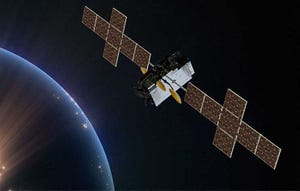Sabeus Taps Petroleum Producers
Sabeus' new Sensor Systems division to bring high-concept optical technology to oil & gas exploration
October 7, 2002
SALT LAKE CITY, Utah -- Sabeus Photonics, Inc, the leader in high concept optical technology, today announced the formation of a new division, Sabeus Sensor Systems, to develop, manufacture and sell a new class of versatile, robust, and precision fiber-optic-based sensing systems for use in oil & gas exploration and production, military, and homeland defense applications. The new division's initial focus is on oil and gas production, and simultaneously with this announcement, the company launched two breakthrough, turn-key fiber-optic-based sensing systems for permanent borehole installation (see separate release entitled: New, Real-time Fiber-Optic Downhole Instrumentation Systems Designed for Permanent Installation.) The announcement was made at the International Exposition and 72nd Annual Meeting of the Society of Exploration Geophysicists (SEG) that began here yesterday. "This event marks a watershed for Sabeus as well as for the oil and gas exploration and production industry," commented Jim Andersen, vice president and general manager of the new sensor division. "For several years, Sabeus has quietly been engaging with notable industrial and military groups to characterize and fine tune its unique fiber-based sensing technology, and it became apparent to everyone that it was time to take the wraps off." Andersen joined Sabeus from Northrop Grumman Corporation, where he was the director of the world's leading military fiber optic acoustic systems group. "I saw the technology and became an instant believer," he said. Optical communication fibers can be transformed into extremely sensitive and precise sensors that can measure over 60 different parameters. The most common method to accomplish this is by "writing" microscopic patterns into the core of the fiber at precise, predetermined intervals. These patterns, called Fiber Bragg Gratings (FBGs,) cause light transmitted down the fiber to be reflected back to the source. If the fiber in the area of a grating is distorted by some external force, the reflected light experiences a change in characteristics, such as color (wavelength) or phase, which may be detected at the source. A variety of techniques exist for distorting the fiber in reaction to a stimulus, such as pressure, temperature, or sound, and after calibration, the fiber's response accurately reflects the stimulus. Sabeus Photonics Inc.
You May Also Like









